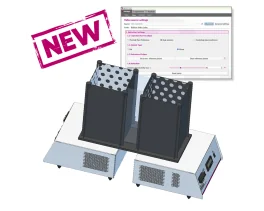Authors
K. Heger, B. Seidler, J. C. Vahl, C. Schwartz, M. Kober et al.
Lab
Max Planck Institute of Biochemistry, Martinsried, Germany
Journal
European Journal of Immunology
Abstract
Mast cells are abundantly situated at contact sites between the body and its environment, such as the skin and, especially during certain immune responses, at mucosal surfaces. They mediate allergic reactions and degrade toxins as well as venoms. However, their roles during innate and adaptive immune responses remain controversial and it is likely that major functions remain to be discovered. Recent developments in mast cell-specific conditional gene targeting in the mouse promise to enhance our understanding of these fascinating cells. To complete the genetic toolbox to study mast cell development, homeostasis and function, it is imperative to inducibly manipulate their gene expression. Here, we report the generation of a novel knock-in mouse line expressing a tamoxifen-inducible version of the Cre recombinase from within the endogenous c-Kit locus. We demonstrate highly efficient and specific inducible expression of a fluorescent reporter protein in mast cells both in vivo and in vitro. Furthermore, induction of diphtheria toxin A expression allowed selective and efficient ablation of mast cells at various anatomical locations, while other hematopoietic cells remain unaffected. This novel mouse strain will hence be very valuable to study mast cell homeostasis and how specific genes influence their functions in physiology and pathology.
Source :
http://onlinelibrary.wiley.com/doi/10.1002/eji.201343731/abstract

 Pain - Thermal Allodynia / Hyperalgesia
Pain - Thermal Allodynia / Hyperalgesia Pain - Spontaneous Pain - Postural Deficit
Pain - Spontaneous Pain - Postural Deficit Pain - Mechanical Allodynia / Hyperalgesia
Pain - Mechanical Allodynia / Hyperalgesia Learning/Memory - Attention - Addiction
Learning/Memory - Attention - Addiction Physiology & Respiratory Research
Physiology & Respiratory Research











![Dynamic Weight Bearing 2.0 – Postural Module [Add-on]](https://bioseb.com/733-home_default/dynamic-weight-bearing-20-add-on-postural-module.jpg)
























 Pain
Pain Central Nervous System (CNS)
Central Nervous System (CNS) Neurodegeneration
Neurodegeneration Sensory system
Sensory system Motor control
Motor control Mood Disorders
Mood Disorders Other disorders
Other disorders Muscular system
Muscular system Joints
Joints Metabolism
Metabolism Cross-disciplinary subjects
Cross-disciplinary subjects CONFERENCES & MEETINGS
CONFERENCES & MEETINGS